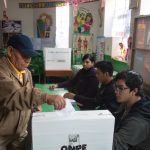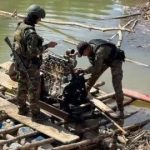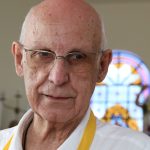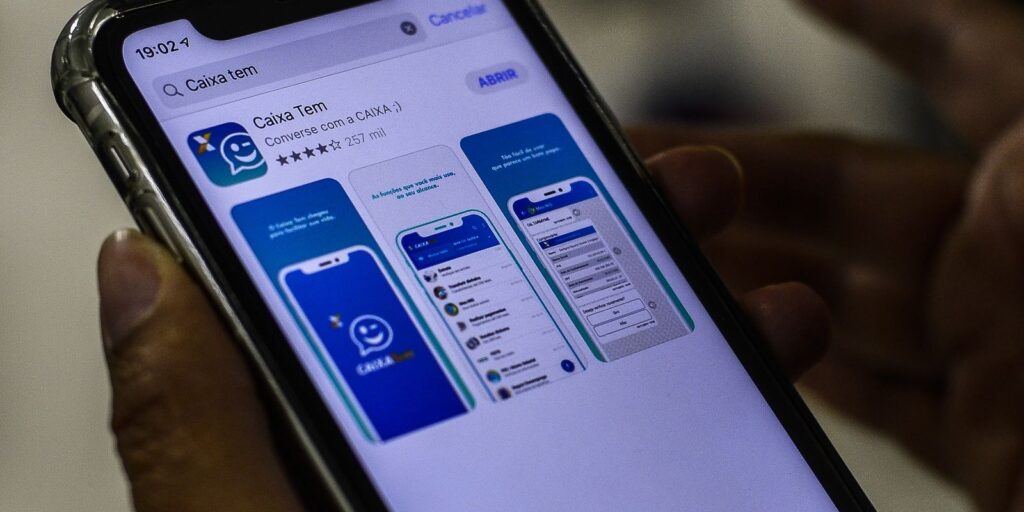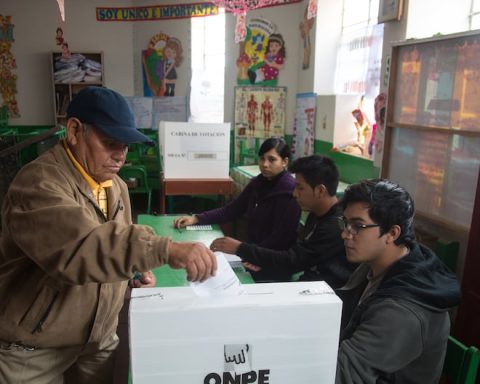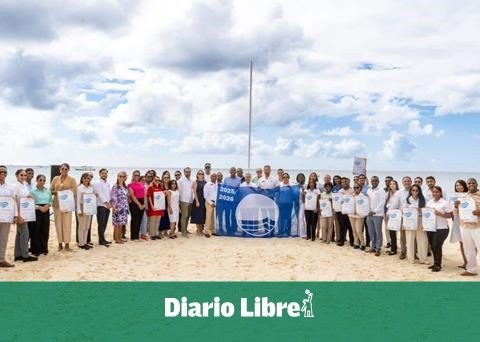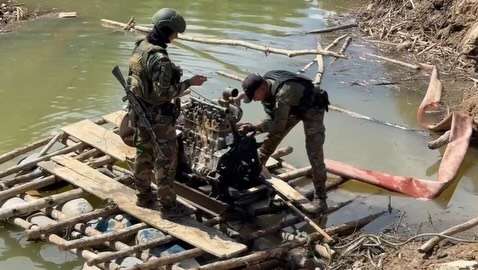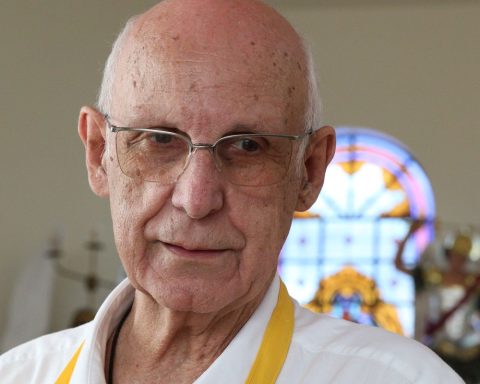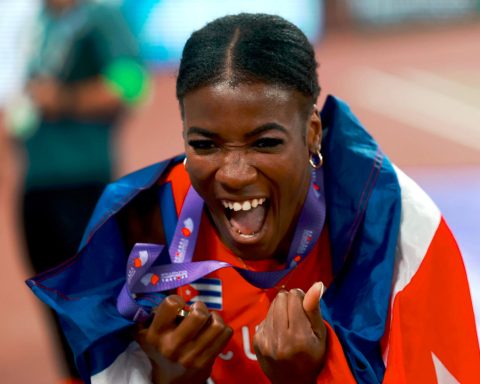On TV they are showing an episode of “Television for identity.” As he watches, a 27-year-old can’t stop a cataract of questions from bouncing off his head. He recognizes himself in much of what happens to the protagonist: the circumstances of his birth, the profession of his supposed father, the military view of the world that they tried to impose on him. And he also shares his essential doubt: “Am I one of the grandchildren you are looking for?”. For Guillermo Amarilla Molfino, that question was not going to have an immediate answerbut it would finally arrive thanks to the struggle of the Grandmothers of Plaza de Mayo and the existence of National Genetic Data Bank (BNDG).
In the last months of 2007, Guillermo – at that time, Martín – overcame his fears and, while watching that television program, approached the National Commission for the Right to Identity (Conadi). There, he added evidence: in addition to being born at the Campo de Mayo Hospital in 1980, his birth certificate was signed by the military doctor Julio César Caserotto, linked to the delivery of children born in captivity. Everything indicated that his doubts were well founded.. But in order to confirm or not whether he was the son of disappeared persons from the last civic-military dictatorship, There was one decisive step left: getting a genetic test..
Near 1,200 people come to the BNDG every year, sent by Conadi) or by request of the Judiciary. There a blood sample is taken and analyze your DNA to know if it coincides with that of any of the families found in its database. Currently, there are 278 who are waiting and hoping to find their grandsons and granddaughters victims of illegal appropriation during State terrorism.
Guillermo went to the Durand Hospital, which is where the laboratory operated at the time – since 2015 it has had its own headquarters on Córdoba Street. He was certain that the result would be positive. Four months later, on March 6, 2008, received the news that his genetic profile did not match any of the families from the bank.
“For me, it meant lowering the blinds and closing the door because the first thing I thought was ‘how could I suspect?’ Guilt comes into play”, recalls Guillermo. He went on with his life, but his DNA also went its own way: became part of the samples of “persons of interest” who doubt their identity –there are currently 12,000– and that are kept in the Bank to be compared again each time a new family group is added to the database.
The BNDG is a model institution, the first of its kind in the world, which was created 35 years ago thanks to a search with the force of the white handkerchief: “Forensic genetics as it is used today was developed in the heat of the Grandmothers’ question of how to filiate with the absence of parents”, highlights Nicolás Furman, head of Laboratory in the bank.
Before 1987, samples had begun to be obtained and the restitution of Paula Eva Logares was even achieved in 1984, the first granddaughter in whom the method was used. “grandfather index” of genetic affiliation grandmother-granddaughter “But then they begin to realize that perhaps the boy or girl, at that time, that she did not find a family could find another group or another that appears later. Thus, the Bank is built, with the idea that when the samples arrive, cases are not analyzed one by one, but against the entire database”, Furman describes.
Reconstruction
Marcela Molfino and Guillermo Amarilla were kidnapped on the same day in different places, on October 17, 1979. It is believed that they were first in the ESMA and then taken to Campo de Mayo. The family did not know that Marcela was pregnantso they had only reported the kidnapping and disappearance of the couple but their genetic patterns were not part of the BNDG.
In 2009, a survivor reported in one of the Campo de Mayo trials that a woman had given birth in that clandestine center, on a date close to that of Guillermo’s birth. Thanks to the research work and cross-referencing of data, Conadi contacted the Amarilla and Molfino families to request their DNA samples.

“Relatives who are available are cited: grandparents, uncles, brothers, cousins. With today’s technology, the more people, the better. If the four grandparents are there, it’s already settled, the genetic answer is found”, explains Furman. And he details that “every time a person enters, regardless of what the complaint about them is, it is compared against all the family groups they are looking for, and vice versa.” For this reason, the incorporation of DNA samples from both families allowed a new crossover with those already registered.
At the end of October 2009, the results confirmed that Martín Gonzalo Jorge García de la Paz was the son of Guillermo and Marcela, and on November 3 the identity of grandson No. 98 was restored.
“Conadi called me on a Friday and told me I had to go on Monday. When I arrived, Claudia Carlotto, Estela’s daughter, attended me”, says Guillermo, with a calmness that reflects the happiness that would come later. “Then –he continues–, Claudia began to tell me the story of a family. I didn’t fall until he cut off the story and told me directly: it’s your family. Do you want to meet her?”
Guillermo remembers that at that time he did not understand very much what was happening because he did not expect it. “There we hugged, he told me that he had three brothers and he told me: They live in the Chaco and they came to see you”.
When they arrived at the Grandmothers of Plaza de Mayo headquarters, the first to receive it was Estela de Carlotto. Guillermo still remembers the joy and hugs of all the Grandmothers for that new grandson who arrived. Later, he knows that his entire family appeared, but he was only able to reconstruct the scene through a video recorded by a cousin, because he had forgotten the details.
The emotion was great: not only were his three brothers, there were also uncles, cousins. “They were a lot. They had filled two buses to come, ”she summarizes and laughs. They were screams, “shout of relief, of joy,” she recalls.
The first thing he asked for was a photo of Marcela, his mother. “One of the first things I wanted to do when I got to Abuelas was to see a picture of her. I looked at her: ‘She’s my mom.’ And it was so. It’s been that way ever since.” That gesture, that image and the feeling of taking a great weight off her gave her peace of mind: “It’s the difference between a life of lies and a life of truth”, Summarizes Guillermo.
The construction of your identity it took a while. “There is a first step that has to do with a DNA result to find out the truth. But the links do not develop from a genetic result. Then there is all the walking and all the identity construction that feeds on memories, ”she explains. Thanks to his brothers Mauricio, Joaquín and Ignacio and the entire Amarilla Molfino family, he was able to weave those ties, put the puzzle together and rescue the memories of his father and mother.
a key task
“When a comparison is positive, the first thing that is done is that everything is analyzed again. That is, the markers are retyped, the genetic comparisons are made again, DNA is re-examined and the mitochondrial, everything”, explains the head of the BNDG laboratory, because the key lies in reliability and certainty of the result. Only then do they communicate with the Conadi or the Prosecutor’s Office and the Grandmothers. “Those calls are pure celebration,” he adds and says that in the four years he has been working at the place he was “lucky” to participate in three restitutions.
The history of the National Genetic Data Bank
Source and photos: BNDG.
William Yellow Molfino decided to leave behind not only the surname and history of their appropriators, but also their old names and wear his father’s: “The first time I had stayed with the first, but I decided to cancel it two or three years after learning the truth because no longer represented me”. She is 41 years old, has a six-year-old daughter, and in her spare time she likes to play musical instruments. She drinks bitter mate. She works at the Memory and Human Rights Space Museum (ex-ESMA) and is part of the Grandmothers of Plaza de Mayo organization.

He speaks slowly, he says that he experienced everything as a moment of extreme happiness. “I was fortunate that my case was resolved before the birth of my daughter and that she does not have to live with the damage of the appropriation. We know that there is a generational transfer in this damage, which multiplies and seems to have no end. She was born and will grow up with truth and with love”, reflects Guillermo, and smiles as he looks at the little girl who is walking around.
Until now 130 identities of grandchildren born in captivity or kidnapped were restored and handed over to appropriators. The last case was resolved in 2019, but the search does not stop and there are new generations waiting: There is already talk of “les great-grandchildren”.
“We believe that, against all odds, we will carry it out”, concludes Furman, in a new anniversary of a pioneering Argentine institutionwhich is an essential part of the fight for Memory, Truth and Justice, and that three decades after his birth, he faces a new scientific challenge: responding to the search for possible great-grandchildren.
PREMIERE: THE BNDG ON PODCAST
As part of the 35th anniversary of the creation of the National Genetic Data Bank, the institution presented this week the podcast “Stories of a search”, available on the Spotify digital platform. The first episode recounts the history of the Bank and has the testimonies of the President of the Grandmothers of Plaza de Mayo, Estela de Carlotto; the North American researcher Eric Stover, and the Argentine geneticist doctor Víctor Penchaszadeh.







